I have 2 meshes with each a shaderMaterial and each a different fragment shader. When I add both meshes to my scene, only one will show up. Below you can find my 2 fragment shaders (see both images to see what they look like). They're basically the same.
What I want to achieve: Use mesh1 as a mask and put the other one, mesh2 (purple blob) on top of the mask.
Purple blob:
// three.js code
const geometry1 = new THREE.PlaneBufferGeometry(1, 1, 1, 1);
const material1 = new THREE.ShaderMaterial({
uniforms: this.uniforms,
vertexShader,
fragmentShader,
defines: {
PR: window.devicePixelRatio.toFixed(1)
}
});
const mesh1 = new THREE.Mesh(geometry1, material1);
this.scene.add(mesh1);
// fragment shader
void main() {
vec2 res = u_res * PR;
vec2 st = gl_FragCoord.xy / res.xy - 0.5;
st.y *= u_res.y / u_res.x * 0.8;
vec2 circlePos = st;
float c = circle(circlePos, 0.2 + 0. * 0.1, 1.) * 2.5;
float offx = v_uv.x + sin(v_uv.y + u_time * .1);
float offy = v_uv.y * .1 - u_time * 0.005 - cos(u_time * .001) * .01;
float n = snoise3(vec3(offx, offy, .9) * 2.5) - 2.1;
float finalMask = smoothstep(1., 0.99, n + pow(c, 1.5));
vec4 bg = vec4(0.12, 0.07, 0.28, 1.0);
vec4 bg2 = vec4(0., 0., 0., 0.);
gl_FragColor = mix(bg, bg2, finalMask);
}
Blue mask
// three.js code
const geometry2 = new THREE.PlaneBufferGeometry(1, 1, 1, 1);
const material2 = new THREE.ShaderMaterial({
uniforms,
vertexShader,
fragmentShader,
defines: {
PR: window.devicePixelRatio.toFixed(1)
}
});
const mesh2 = new THREE.Mesh(geometry2, material2);
this.scene.add(mesh2);
// fragment shader
void main() {
vec2 res = u_res * PR;
vec2 st = gl_FragCoord.xy / res.xy - 0.5;
st.y *= u_res.y / u_res.x * 0.8;
vec2 circlePos = st;
float c = circle(circlePos, 0.2 + 0. * 0.1, 1.) * 2.5;
float offx = v_uv.x + sin(v_uv.y + u_time * .1);
float offy = v_uv.y * .1 - u_time * 0.005 - cos(u_time * .001) * .01;
float n = snoise3(vec3(offx, offy, .9) * 2.5) - 2.1;
float finalMask = smoothstep(1., 0.99, n + pow(c, 1.5));
vec4 bg = vec4(0.12, 0.07, 0.28, 1.0);
vec4 bg2 = vec4(0., 0., 0., 0.);
gl_FragColor = mix(bg, bg2, finalMask);
}
Render Target code
this.rtWidth = window.innerWidth;
this.rtHeight = window.innerHeight;
this.renderTarget = new THREE.WebGLRenderTarget(this.rtWidth, this.rtHeight);
this.rtCamera = new THREE.PerspectiveCamera(
this.camera.settings.fov,
this.camera.settings.aspect,
this.camera.settings.near,
this.camera.settings.far
);
this.rtCamera.position.set(0, 0, this.camera.settings.perspective);
this.rtScene = new THREE.Scene();
this.rtScene.add(this.purpleBlob);
const geometry = new THREE.PlaneGeometry(window.innerWidth, window.innerHeight, 1);
const material = new THREE.MeshPhongMaterial({
map: this.renderTarget.texture,
});
this.mesh = new THREE.Mesh(geometry, material);
this.scene.add(this.mesh);
I'm still new to shaders so please be patient. :-)

